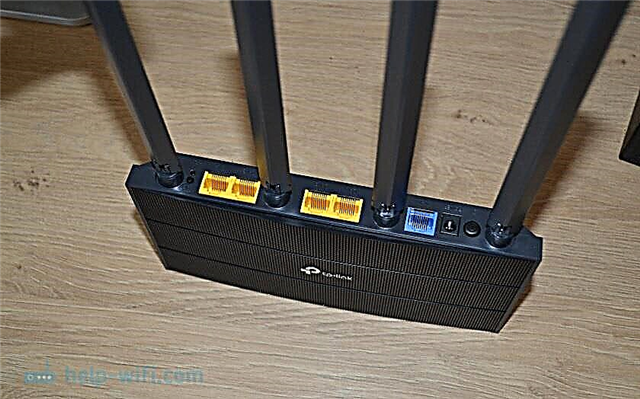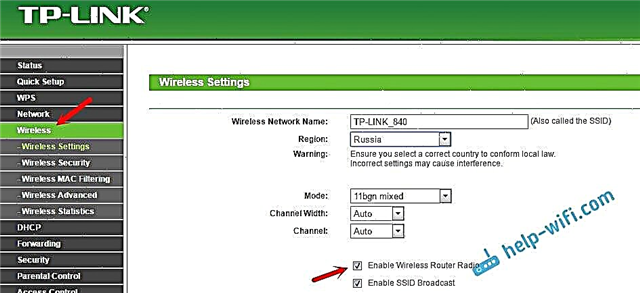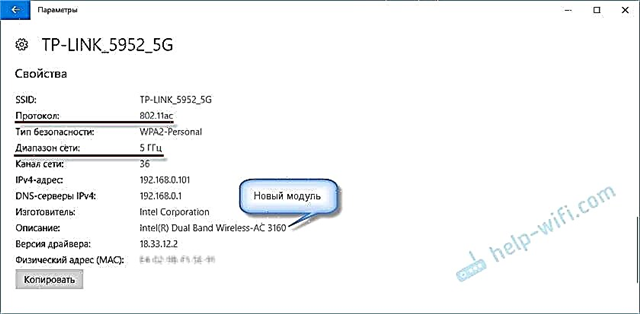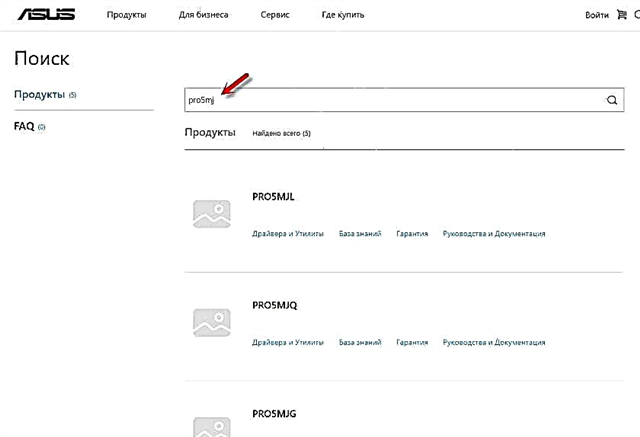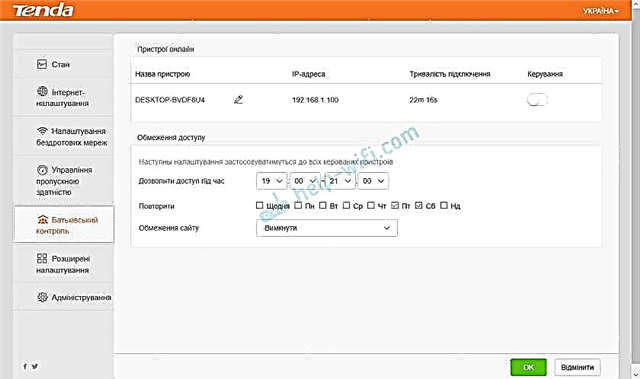Today I want to introduce you to the Tenda F6 router. A very interesting model, first of all for those who are looking for a functional and beautiful, but inexpensive router for an apartment, or a small house. In the description on one of the sites I read that the F6 model was designed for city apartments. Perhaps this is due to the powerful Wi-Fi antennas. Tenda F6 has several interesting features that I will talk about in this review. Consider the appearance and characteristics of this model. I will also show you how to connect and configure this router.
I've already unpacked the router, plugged it in, configured it and tested it a bit. I liked the look very much. The body is very stylish. White looks great. Good functionality and simple control panel (web interface) with the ability to change the language. There will definitely not be any problems with setting up. Everything is clear and accessible. Includes a quick setup guide. Thanks to its powerful antennas, Tenda F6 shouldn't have any problems with Wi-Fi coverage. 4 5dBi antennas provide a stable and strong signal. Let's take a closer look at the appearance and specifications.
Tenda F6 review: package bundle, case, specifications
Tenda-style packaging with a photo of the router and all the information needed. The box contains the main characteristics and capabilities of the router. There is a sticker indicating the warranty period (two years!) And all the necessary contacts to contact support.

Everything inside the box is neatly folded and protected from damage.

The package bundle is standard: the Tenda F6 router itself, power adapter, network cable, documentation.

The body of the router is very tightly assembled from two parts, which are made of white plastic. Only the upper part is matte, and the lower one is more glossy or something. Nice and pleasant plastic, has no foreign smell .. Interesting, curved shape of the case. In white, it all looks very cool and stylish.

On the front panel there is one indicator (lit / blinking blue) and the Tenda F6 logo.

Antennas are non-removable, large and powerful (at 5dBi). I really liked that they are tightly fixed in any position and do not dangle.

Buttons (more precisely a button) and ports are located on the back. There is a Wi-Fi / RST button (hold it down for 1-3 seconds - turn off / on Wi-Fi network. Hold for about 8 seconds - reset the settings to factory settings). 3 LAN ports, 1 WAN port, and a connector for a power adapter.

There are holes for ventilation at the bottom, and holes that make it possible to lead the router to the wall. There is also a sticker with factory information.

Powered by Tenda F6 on a chip from Qualcomm. It provides fast and stable connection. Wireless speed up to 300Mbps. This is an N300 (802.11b / g / n) router. It does not support the 5 GHz band, only 2.4 GHz. And there is no IPTV support. So if you need a 5 GHz band and / or IPTV support, then you can look at the more expensive models from the Tenda lineup. WAN and LAN ports operate at speeds up to 100 Mbps.
It is possible to configure the schedule for the Wi-Fi network. The router will itself turn off and turn on the Wi-Fi network. There is also support for the WISP function. You can configure the router in repeater mode to strengthen an existing Wi-Fi network (I wrote about setting up in this article: repeater mode (repeater, WDS bridge) on a Tenda router). There is a QoS function (bandwidth control).
Setting up a Wi-Fi router Tenda F6
The setup process is as easy as shelling pears. But first you need to connect the Internet and connect to the router itself. We connect the Internet (cable from an Internet provider, modem) to the WAN port. We turn on the power of the router.

Next, you need to connect the device from which we will perform the configuration to the router. A PC or laptop is best suited for this. And it's better to connect via a network cable.

If there is no computer, or it is not possible to connect it via a network cable, then we connect to the router via a Wi-Fi network. The factory name (SSID) can be found on the label below. The network is open, no password. We just select a network and connect to it.

After connecting, we need to open the page with the router settings (web interface). Open any browser and go to the IP address 192.168.0.1. The address must be entered in the address bar, not the search one. I wrote more about this in the article 192.168.0.1 - entering a router, or a modem. admin and admin.
A page will open at 192.168.0.1 where you can quickly configure the router. Set basic settings: Internet connection and Wi-Fi network (name, password).
- Select the type of Internet connection (PPPoE, Dynamic IP, Static IP) that your ISP uses. If it is PPPoE - set the username and password (issued by the Internet provider).
- Change the name of the Wi-Fi network and set the password for Wi-Fi.

Click Ok, and we see a message that the router has saved our settings. If your device was connected via Wi-Fi, and you changed the name and / or password of the Wi-Fi network, then you need to reconnect it.

The basic settings are now complete. And if the Internet works through the router, and the Wi-Fi network is password protected, then the router configuration is completed. But you can go to 192.168.0.1 again, and the control panel with all the settings will already open. You can change the language. I only have English and Ukrainian, as the router is for the Ukrainian market. The main page immediately displays the status of the Internet connection. As you can see in the screenshot below, in my case, an internet connection is established.

If you do not have an Internet connection, check with your Internet provider for all settings and set them in the "Internet Settings" section. In the same place, if necessary, you can change the operating mode of the router to WISP, Universal Repeater, or AP (access point).

In the "Wireless network settings" section, you can change the name and password of the Wi-Fi network. And also change the channel, channel width, wireless network mode and enable the Wi-Fi schedule.

The next section is "Bandwidth Management".

There is also a "Parental Control" function.

In the "Advanced Settings" section, you can find the function of filtering by MAC-addresses, IP-address binding, port forwarding, and other settings.

Well, the last tab is "Administration". There you can set the time, update the Tenda F6 firmware, reset the settings, set the LAN, WAN parameters, and most importantly, set the router administrator password (to protect the settings). I recommend that you do this. Just come up with a password, enter it twice and save the settings.

The settings are now protected and a password prompt will appear when entering the web interface.

This completes the Tenda F6 setup!
Conclusions
Most of all I liked the appearance of Tenda F6. Really stylish body made of good plastic. In budget models, this is very rare, as is the button to turn off the Wi-Fi network. The setup is very simple. There are all the necessary modes of operation if you want to use Tenda F6 as a repeater or access point. Tenda F6 copes with its tasks perfectly. I think the router will hold about 10 devices without any problems at an average load. But do not forget that this is still a budget model.
I look forward to your feedback on Tenda F6 in the comments!

